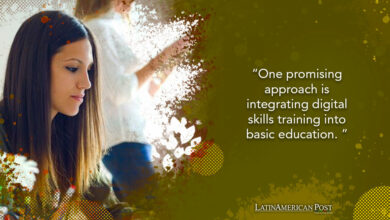The Challenge of Homeschooling During the Coronavirus Pandemic
With coronavirus cases still high around the world, students, teachers, and parents have been forced to adapt to distance learning. Some students continue home instruction while others gradually or alternately return to classrooms.

The Woman Post | Carolina Rodríguez Monclou
Listen to this article
Holly Kuzmich, executive director of the George W. Bush Institute, told ABC News, “Just the fact that we are using digital learning more, I think it will open people's eyes to the possibility of how to do more blended instruction in the future in the schools."
Even when all children return to school, institutions will focus on using digital tools in the future to deliver instruction in-person and online. According to Kuzmich, schools have to reconsider their educational proposals in subjects and schedules.
One of the main concerns about remote learning during the coronavirus pandemic is that school is not only a place for children to learn the basics of reading, math, history, and science, but it is also childcare for many families, especially for working parents.
This is a real challenge families face. School and parents have to think differently about schedules and how they organize the school day. Regarding the new normal, Kuzmich notes: “I think realizing this will help us open our eyes to some possibilities that we could rethink in terms of how we use time and digital tools in our schools to better serve students and families. ”.
An Associated Press and Chalkbeat poll found that Hispanic and black students are more likely than white students to start school online, but therein lies considerable concern about the digital divide and the long-term consequences of increasing the socioeconomic gap in student achievement.
Also read: Educational Inequality: Still a Global Problem
Low-income children are likely to be falling further and further behind and more work is needed to close the gap. However, this will be a multi-year process for children to get back where they need to be. It will be difficult to solve this in a few weeks. On the other hand, high-income kids are doing even better than expected.
One of the benefits that Kuzmich highlight of remote learning is open communication between teachers and parents in a new way: “parents have to stay in touch with teachers, tell them what they see at home, how their children are doing, what they are struggling with." That communication is more key now than ever.
The National Center for Educational Statistics ensures that more than 40% of Latino families do not have the necessary technology to take classes from home. McKenna Potter, an ESL educator, told NBC News, “It's hard to see students already starting out at a disadvantage because our school systems are not set up to support migrant families, to begin with, and now with remote learning that he's moving into that. "
With so much uncertainty surrounding how classes will be structured in the future, it is difficult to help eager young people prepare for how they will stay connected to education, especially if the lessons must continue to be delivered online.
Establishing personal relationships between students and teachers is critical to student success, and that's not easy to achieve through video sessions. Still, the good news of better online participation is a victory worth celebrating.




